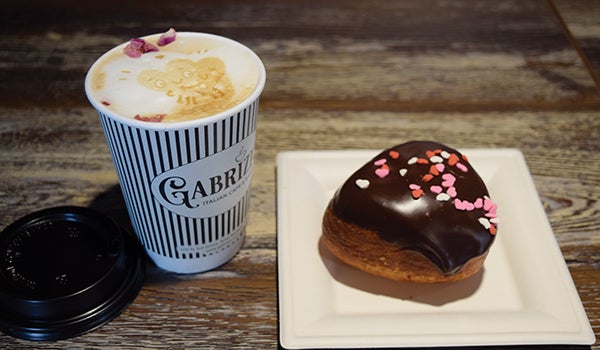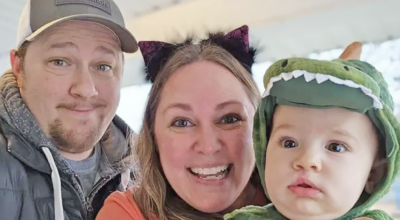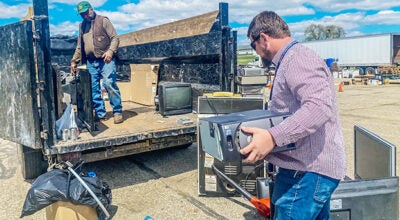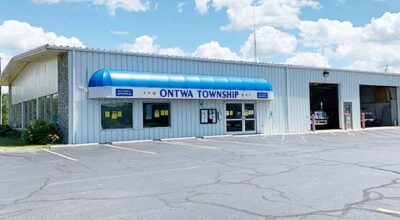An experience to remember
Published 6:30 pm Friday, September 9, 2011
Edwardsburg sixth-grader Collin Esarey got more adventure than he bargained for at Space Camp this summer when the power went out for a day, including air conditioning, in Huntsville, Ala.
“We only had muffins in the morning because they didn’t have a refrigerator. Muffins don’t fill you up,” said the boy who made adults feel like maybe they weren’t smarter than a fifth-grader.
He has earned straight As all through school and will be taking seventh grade math and English.
The Boy Scout was Mr. Pre-Teen Edwardsburg, plays soccer, basketball and baseball and is an altar server at church.
Collin, at 11 perhaps the youngest program presenter in Dowagiac Rotary Club history, is the son of Rotarian Phillip Esarey.
Space Camp, located at the U.S. Space and Rocket Center in Huntsville, just south of Tennessee, has also been attended by club President Barbara Groner as a Cassopolis educator in 1991.
The week-long Space Camp program promotes the study of math, science and technology, coupling classroom instruction with hands-on activities and teaching teamwork, decision-making and leadership.
More than 500,000 students and adults since 1982 have attended Space Camp, which apparently will continue despite the end of shuttle missions.
Collin, a “hybrid” who combined Space Camp with his favorite part, Aviation Challenge, said of the latter, “You learn how to fly jets and the flight simulators.”
“My career objective is to go to Yale and join the Air Force. Then I’m probably going to be an engineer and run in politics. I’m a big fan of politics.”
Space Camp is for ages 9 to 11, with two other offerings for older students, Space Academy and Advanced Space Academy.
“NASA’s just grounded for right now,” Collin commented at Elks Lodge 889 on the future of Space Camp. “They’re making the Orion spacecraft, which is going to go back to the moon a couple of times and maybe to Mars. They made a little capsule that they’re still testing, which is going to be the new thing. They’re probably going to keep the shuttle missions for Space Camp for quite a while.”
Collin said campers sleep in bunk beds “and you don’t want to make any noise or the counselor will come in and get you in trouble. There are lockers in your room for your stuff. You probably want to put a lock on it so no one can get in. After you get your bags unpacked and your room ready, you go for a presentation on what you’re going to do so they can lay out the rules. At the end, you get your counselor for the group” of about a dozen campers. He estimated there were “20, maybe 30,” groups.
“Really cool” flight simulators in Aviation Challenge start with taking off and landing.
“I got the hang of it and was able to be the first one to land out of my group,” Collin said. “We had a certain type of airplane that we used, the F-18 Hornet, which is easy to fly.”
Next, Collin learned survival techniques.
“We had to do fire building,” he said. “My group decided to build a log cabin. It fell over the first time because it wasn’t designed very well. Then we finally got it together. Another cool thing was shelter-building. They give you one parachute. The first time we had like a tent, but that fell over, so we tied it up and staked it down with rocks, then put this huge stick in the middle to hold it and staked that into the ground. Basically, when the air went through it, it puffed up and got really huge. We could hold our whole group in it.”
“Another cool thing about Aviation Challenge,” Collin said, “is they have actual airplanes and helicopters there. They have a Cobra helicopter, an F-14 Tomcat, an F-16 fighting Falcon and a Phantom. The helo-dunker is a simulator like a helicopter. It drops you into the water and turns to the side as if it was a helicopter and you’ve got to try to get out while the water’s spilling in. They make sure they give you enough air space that you have enough time to get out. The helo-lifter is like a net you swim up to and sit in and they’d pull us up. Kind of like what they used to get them out of the capsules and up to the helicopters in the space program.”
At the conclusion of Aviation Challenge, Collin said King of the Hill, or Top Gun dogfights, is a competition. “I beat everybody” to win a patch for his flight suit.
His team also created a winning mission patch.
“Something cool at the end of Space Camp is they give you wings that look real,” Collin said. “In your down time at Space Camp, which there isn’t much of, they show you around Pathfinder, the rocket yard and the Saturn V. Pathfinder is an actual real space shuttle on a big pad. It was the first space shuttle ever made, but was too heavy to fly.”
Moving on to Space Camp simulators, Collin described the Five Freedoms of Liberty Chair demonstrating yaw, pitch up and down, roll and back and forth motion.
A gravity chair simulates moon weightlessness; MAT (Multi-Access Trainer) “is a bunch of rings that they strap you into to show you what it’s like in a tumble spin, moving all around”; and MMU, like jet packs astronauts rely on in space.
“Two joysticks help move you around,” Collin said. “That was really neat.”
Collin’s space shuttle mission involved repair.
“I was in mission control. I was the propulsion officer. They say I’m in charge of everything that goes boom. It was a fun job because you have a TV so basically you can see everything that’s happening so we could make fun of what others were doing. There’s a fake cartoon shuttle that blasts off. Basically, no mission specialists who do the repair actually made it back into the shuttle. We were already landing when they came back in, so we basically left them in space.
“For some reason, I don’t know how, we were the only ones who opened the payload bay doors. But we never shut them. We had a really bad mission. That’s probably why we didn’t win. Of course, there’s learning in there, so there’s a bunch of facts about NASA and the Mercury, Gemini, Apollo, Skylab and the space shuttle.”







